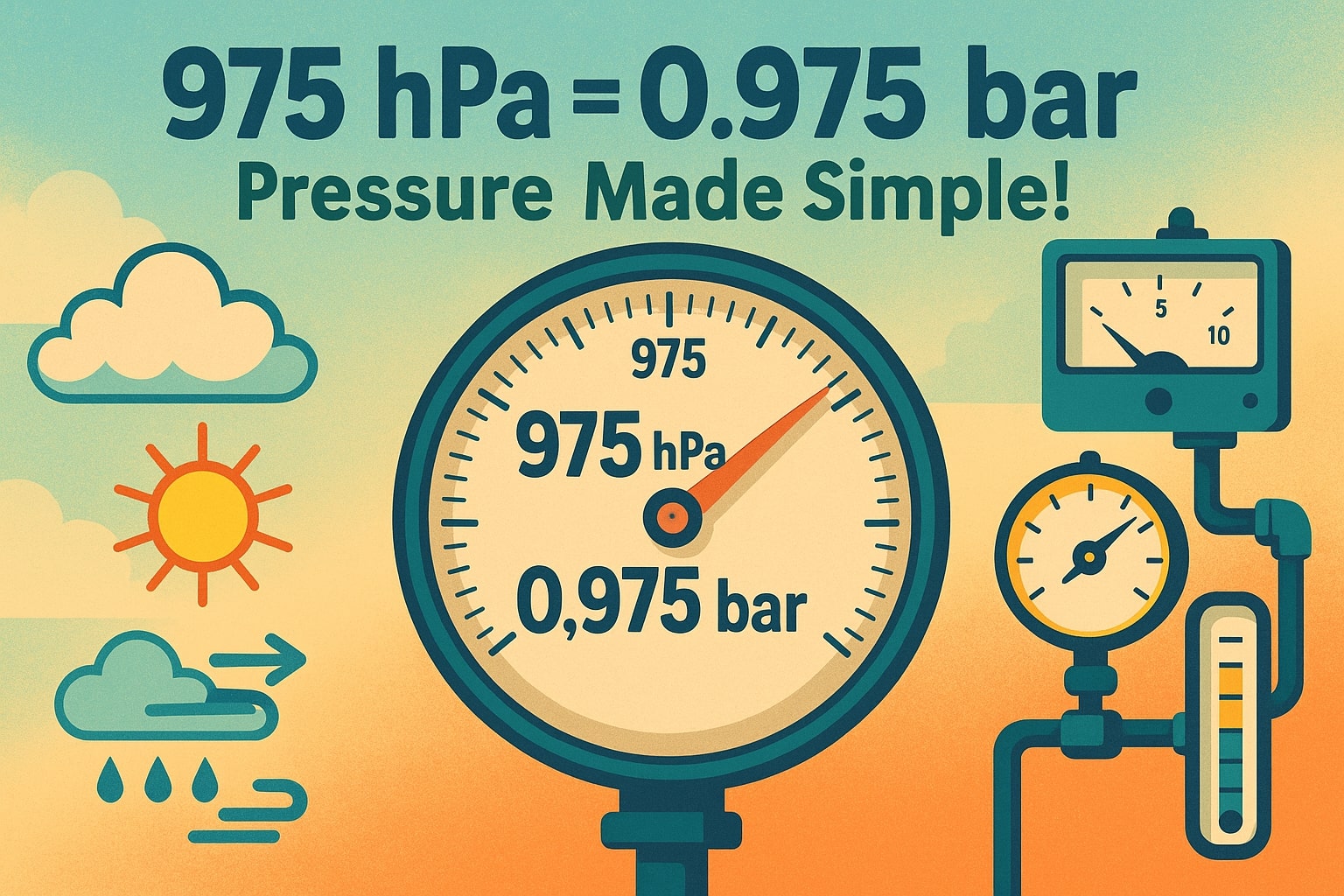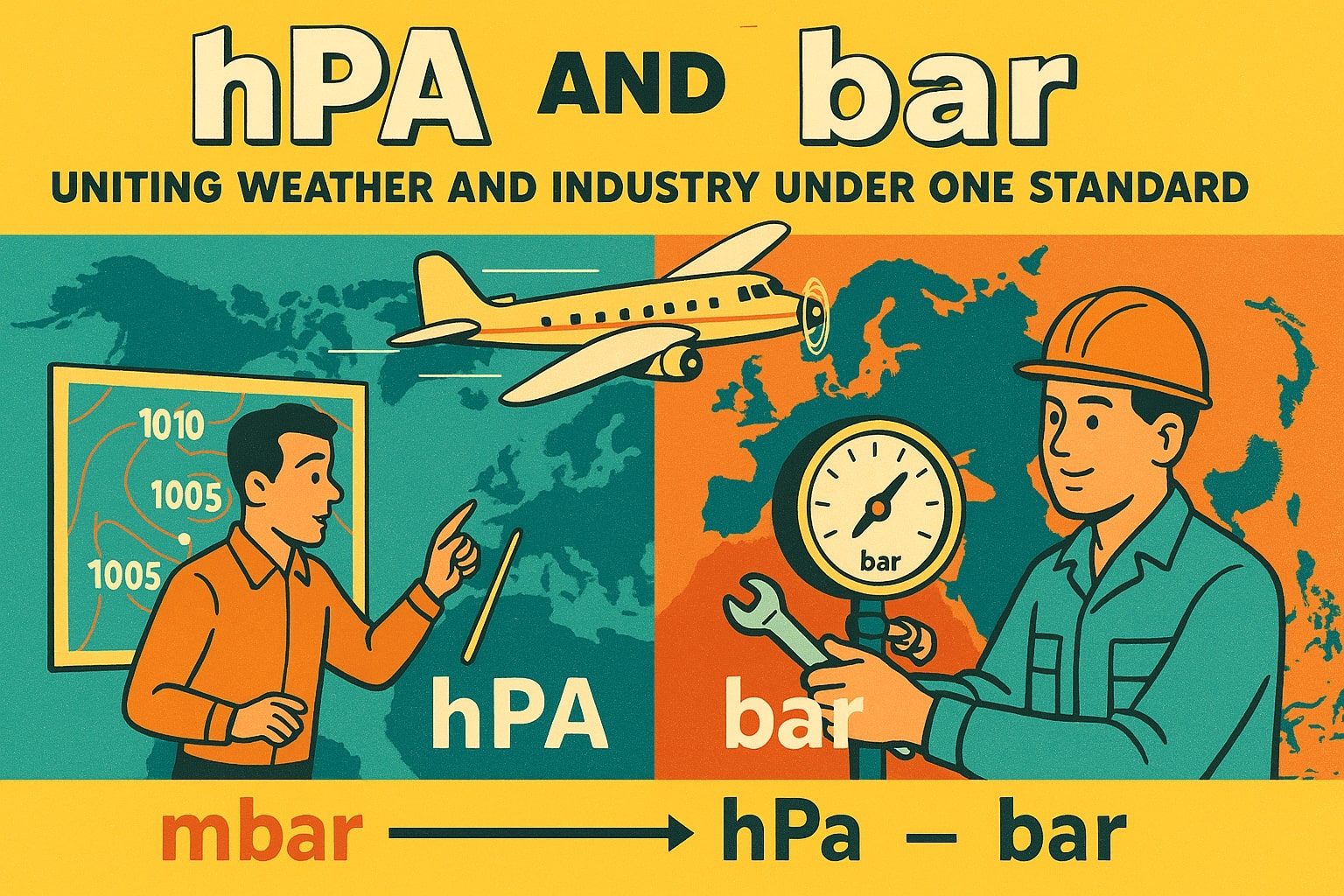Hectopascal to Bar – How to convert hPa to bar
Looking to convert hectopascal to bar? Both units measure pressure and are used widely in weather, aviation, and industrial systems. While they’re closely related, each has its own preferred applications: hectopascals dominate meteorology, while bars are common in engineering and atmospheric reports. Converting between them is straightforward, and understanding when each is used makes it easier to interpret data across industries.

What is a hectopascal (hPa)?
A hectopascal equals 100 pascals (Pa), or one millibar. It’s the primary unit for:
-
Weather forecasts and maps, where surface air pressure is commonly given in hPa.
-
Aviation altimeter settings, since many flight levels use pressure-based references.
-
Meteorological instruments, as hPa values are easy to read and align with historical millibar data.
For example, standard sea-level atmospheric pressure is about 1,013 hPa — a familiar reference point in weather reports worldwide.
What is a bar?
A bar equals 100,000 pascals (Pa) or exactly 1,000 hectopascals (hPa). It’s widely used in:
-
Industrial systems, such as hydraulics and pneumatics, for quick, easy-to-read pressure scales.
-
Oceanography and climatology, as bars (or fractions of a bar) simplify long-term datasets.
-
Weather and scientific publications, where 1 bar often represents average sea-level pressure for reference.
Although the bar isn’t an official SI unit, it aligns neatly with the metric system and remains convenient for a variety of fields.
How to convert hectopascal to bar
Since both units are metric-based, the relationship is simple:
1 bar = 1,000 hPa
To convert:
Bar = Hectopascals (hPa) ÷ 1,000
Example: If a storm system has a central pressure of 975 hPa:
975 ÷ 1,000 = 0.975 bar
For fast results without manual division, use our Pressure Converter or explore other Conversion tools to handle any pressure calculation instantly.
Did you know?
-
Meteorology standardization: The shift from millibars to hectopascals in the late 20th century was seamless because 1 hPa equals 1 mbar, allowing weather services to update terminology without changing instruments.
-
Deep-sea benchmarks: Oceanographers often use bars when measuring water pressure — each 10 meters of depth roughly adds 1 bar of pressure.
-
Historic storm record: The lowest recorded sea-level pressure on Earth, during Typhoon Tip (1979), reached 870 hPa, which equals 0.87 bar.
-
Engineering overlap: While bars are often used in Europe for tire and industrial pressure ratings, the underlying SI calculations always convert through pascals and hectopascals for accuracy.
How Bars and Hectopascals Simplified Global Forecasting
In the mid-20th century, weather agencies across Europe and Asia transitioned from millibars to hectopascals to standardize reporting with the SI system. Historical archives from the World Meteorological Organization note that the change didn’t disrupt operations because 1 hPa = 1 mbar.
At the same time, bars became a reference unit for engineers and scientists because 1 bar closely matches standard sea-level atmospheric pressure. This parallel adoption allowed weather forecasts, aviation protocols, and industrial applications to coexist seamlessly while staying consistent with metric standards.

Bringing the Units Together
Converting hectopascal to bar is as easy as dividing by 1,000. Hectopascals keep weather data readable, while bars provide a convenient benchmark for engineering, diving, and ocean science. Knowing both lets you read forecasts, technical manuals, and research papers with ease.
For instant, accurate conversions, use our Pressure Converter or explore other Conversion tools to make every unit conversion quick and reliable.

